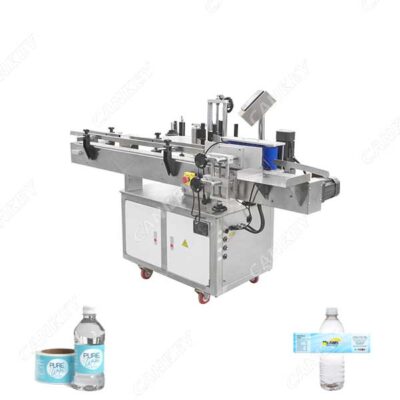One critical step in the bottling process is the application of bottle caps, which traditionally required manual labor. However, with advancements in technology, automatic bottle capping machines have emerged as changers, revolutionizing the industry by increasing productivity, reducing costs, and ensuring consistent quality. The bottle capping machine can be used independently or in combination with filling machine, aluminum foil sealing machine, labeling machine, inkjet printer, etc.

Automatic Bottle Capping Machine Features:
- Enhanced Efficiency and Speed
Automatic bottle capping machines significantly enhance speed and productivity by automating the capping process. These machines can cap bottles at a remarkable rate, capable of achieving hundreds or even thousands of caps per minute, depending on the specific model and bottle size. By eliminating manual labor, manufacturers can achieve higher output levels while maintaining consistent speed, allowing them to meet increasing market demands effectively.
- Precision and Consistency
Maintaining consistent quality and accuracy in bottle capping is crucial for product integrity and customer satisfaction. Automatic bottle capping machines offer precise and reliable cap application through their advanced features. These machines are designed to handle a wide range of cap sizes and shapes, accommodating various bottle types, including plastic, glass, and metal containers. With adjustable settings, they ensure a secure and uniform seal for every bottle, eliminating the risk of leaks or contamination. The precise torque control mechanisms of these machines guarantee the perfect tightness of each cap, preventing over-tightening or under-tightening issues.
- Versatility and Adaptability
Automatic bottle capping machines are highly versatile and adaptable to different packaging needs. They can seamlessly integrate into existing production lines, making them suitable for small-scale businesses as well as large-scale industrial operations. These machines can be customized to handle specific cap types, including screw caps, press-on caps, snap caps, or even specialized closures. The flexibility of these machines makes them compatible with a diverse range of industries, such as food and beverages, pharmaceuticals, cosmetics, and chemicals.
- Improved Quality Control and Cost Efficiency
Automatic bottle capping machines offer significant advantages in terms of quality control and cost efficiency. By automating the capping process, the risk of human error is minimized, ensuring consistent and reliable sealing. These machines can incorporate advanced inspection systems, such as vision systems and sensors, to detect improperly capped or defective bottles, allowing for immediate corrective actions.
Furthermore, automatic bottle capping machines contribute to cost efficiency by reducing labor costs associated with manual capping. The machines operate continuously with minimal downtime, improving production rates and overall efficiency.
Automatic Capping Machine Working Process:
- Turn on the emergency stop switch and press the start button.
- Conveyor belt, entrainment and capping motor operation.
- The conveyor belt and the entrainment belt drive the bottle into the capping area, and the bottle is detected by the electric eye of the clipper.
- The entrainment stops, the cylinder is clamped, and the capping action is performed for the set time.
- After the set time is reached, the pinch cylinder is released, the pinch motor starts again, and the bottle is taken away.
- Wait for the next bottle, and proceed to the next round of capping.


Reviews
There are no reviews yet.